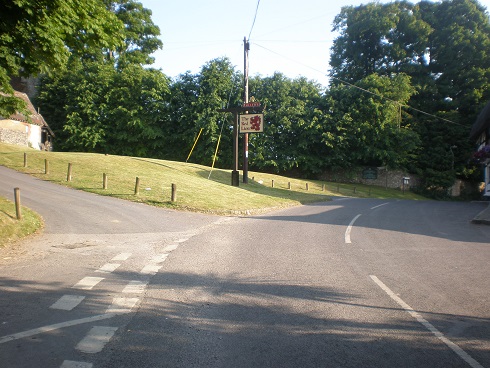By Tim Lambert
Chalton began as a small Saxon settlement on the edge of Hampshire in the 6th century. It was originally called cealc tun. The Saxon word cealc meant chalk and tun meant a farm or hamlet. So it was the little hamlet on the chalky ground.
For centuries Chalton was a small and isolated village. At the time of the Domesday Book in 1086 England was divided into areas called manors. Chalton was part of a manor with Blendworth, Clanfield, Catherington, and Idsworth. At that time the manor belonged to Roger Montgomery, Earl of Shrewsbury. It probably had a population of not more than 100.
In the 13th century, the manor of Chalton belonged to Simon De Montfort, who famously rebelled against Henry III and who is sometimes called the Father of Parliament.
Despite its small size Chalton had a church in Saxon Times. In the 13th century, the parish Church of St Michael was rebuilt. Chalton is also known for its pub, the Red Lion. This old building has been an inn since the early 16th century.
In the past Chalton was on a main road. However, in the early 18th century a turnpike road was built and it bypassed the village. (A turnpike road was privately owned and maintained and you had to pay to use it).
However, Chalton lay on infertile soil. It was said to be the poorest land in Hampshire. So most people there grazed sheep. In 1710 a survey showed there were 2,035 sheep in Chalton. There were also 24 houses so there were probably not more than 100 inhabitants.
Nevertheless, Chalton had village stocks where offenders were locked so people could jeer at them. The village also had a whipping post. There was also a pound where stray animals were locked. The owners had to pay a fine to get them back.
Chalton was also overlooked by a windmill. There has been a windmill at Chalton since the 13th century. In 1979 Chalton windmill was made into a private dwelling.

At the time of the first census, in 1801 Chalton had a population of only 127. Even by the standards of the time, it was a small village. However, Chalton did grow larger during the 19th century. It reached its peak in the mid-19th century. In 1851 Chalton had a population of 303. However, by 1901 the population of Chalton had fallen to 202. By the 1960s the population of Chalton was only about 100, no more than it was in the Middle Ages. Nevertheless today Chalton is a charming little village.